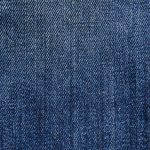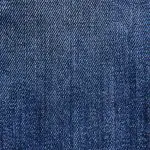You need anti-static aramid fabric because it offers strong protection against static shocks, heat, flames, and abrasions, keeping you safe in tough industrial settings. Its combination of high-strength aramid fibers and conductive materials controls static buildup effectively. This fabric is used widely across industries like oil, gas, and manufacturing for reliable safety. It’s also durable, complies with key safety standards, and easy to maintain. Discover how this fabric can meet your protection needs and how to care for it properly.
Table of Contents
Key Takeaways
- Anti-static aramid fabrics combine durable aramid fibers with conductive materials to dissipate static electricity and provide heat and flame resistance.
- These fabrics are vital for worker safety in industries like oil, gas, electrical utilities, and manufacturing with static spark hazards.
- Compared to other flame-resistant materials, aramid fabrics offer superior heat resistance, lightweight comfort, and inherent anti-static properties.
- Proper care includes washing with mild detergent in cold or warm water, avoiding bleach, air drying, and routine inspections for damage.
- Select garments certified to standards like NFPA 70E and ASTM F1506, matching protection needs and comfort for specific industrial tasks.
Understanding the Composition of Anti-Static Aramid Fabric
Anti-static aramid fabric combines the inherent strength of aramid fibers with specialized conductive materials to reduce static electricity buildup.
When you choose this fabric, you get the durability of aramid fibers like Kevlar or Nomex, known for their heat and abrasion resistance. These fibers form the core structure, providing toughness in demanding environments.
Integrated into this base are fine conductive fibers such as carbon, stainless steel, or silver threads. These conductive elements create a path to safely dissipate static charges, preventing sparks or shocks.
The blend ratio and weaving technique directly affect the fabric’s performance—balancing protection, comfort, and static control.
Key Safety Benefits of Anti-Static Aramid Fabric
The strength and conductive properties of aramid fabric don’t just improve durability—they play a vital role in keeping you safe on the job.
Anti-static aramid fabric dissipates static electricity, reducing the risk of sparks that could ignite flammable materials or cause electrical shocks. This protective quality is essential in environments where static buildup poses serious hazards.
Additionally, aramid fibers provide excellent heat and flame resistance, shielding you from burns and exposure to extreme temperatures. The fabric’s toughness also guards against cuts and abrasions, helping prevent injuries during physical work.
Applications of Anti-Static Aramid Fabric in Various Industries
When you work in environments where safety and durability are non-negotiable, aramid fabric with anti-static properties becomes indispensable.
You’ll find it widely used in industries like oil and gas, where the risk of static sparks igniting flammable gases is high. In electrical utilities, this fabric protects you from both static discharge and heat hazards.
Manufacturing plants, especially those handling combustible dust, rely on anti-static aramid garments to minimize fire risks. Even aerospace and automotive sectors use these fabrics to guarantee worker safety during high-heat or static-prone tasks.
Comparing Aramid Fabric With Other Flame-Resistant Materials
Although aramid fabric offers exceptional flame resistance and durability, you might wonder how it stacks up against other materials designed to protect you from fire hazards.
Compared to cotton treated with flame retardants, aramid fibers maintain their protective qualities longer, even after multiple washes. Unlike modacrylic, which can soften under high heat, aramid keeps its structural integrity, providing consistent protection.
While leather offers good heat resistance, it lacks the lightweight and flexible nature of aramid fabric, which is vital for comfort and mobility. Additionally, some flame-resistant synthetics may not have the inherent anti-static properties that aramid provides.
When you choose aramid, you get a balance of strength, heat resistance, and reliability that few other flame-resistant materials can match.
How Anti-Static Properties Enhance Workplace Safety
You rely on your gear to keep you safe from static discharge, which can ignite sparks in hazardous areas.
Anti-static aramid fabric reduces these risks by preventing dangerous buildups of electrical charge.
Reducing Static Discharge Risks
Because static discharge can trigger dangerous sparks in industrial settings, anti-static aramid fabric plays an essential role in protecting you and your coworkers.
By dissipating electrical charges quickly, this fabric prevents the buildup that leads to sudden shocks. When you wear garments made from anti-static aramid, you reduce the likelihood of static electricity igniting flammable materials or damaging sensitive electronic equipment.
This lowers the risk of accidents and guarantees a safer work environment. Additionally, the fabric’s durability means these protective qualities last through multiple washes and tough conditions.
Choosing anti-static aramid garments means you’re actively minimizing static discharge risks, helping maintain safety standards and protecting everyone on site from potential harm caused by uncontrolled static electricity.
Preventing Sparks in Hazardous Areas
When working in hazardous areas, preventing sparks is essential to avoid fires and explosions. Anti-static aramid fabric plays a key role by dissipating static electricity safely, reducing spark risks. You’ll notice how this fabric’s unique weave and conductive fibers help maintain a safe environment. Here’s how anti-static properties enhance workplace safety:
| Feature | Benefit | Impact |
|---|---|---|
| Conductive fibers | Discharge static charge | Eliminates spark risk |
| Durable material | Withstands harsh use | Long-lasting protection |
| Breathable fabric | Guarantees comfort | Promotes consistent wear |
| Flame-resistant | Resists ignition | Reduces fire hazards |
| Easy maintenance | Retains anti-static traits | Reliable safety gear |
With this fabric, you’re actively minimizing spark hazards, keeping your workplace safer every day.
Enhancing Electrical Safety Measures
Building on the spark prevention benefits of anti-static aramid fabric, its role in enhancing electrical safety goes beyond just reducing ignition risks.
When you wear garments made from this fabric, you minimize static charge buildup, which can cause unexpected shocks or equipment malfunctions. This reduces the chance of electrical accidents, keeping you safer in environments with sensitive electronics or live circuits.
Additionally, the fabric’s durability maintains consistent anti-static performance even after repeated use and washing, ensuring ongoing protection.
By choosing industrial garments with anti-static aramid fabric, you also help maintain regulatory compliance and promote a safer workplace culture.
Ultimately, these fabrics help you manage electrical hazards proactively, giving you confidence and peace of mind on the job.
Durability and Maintenance of Aramid Workwear
Although aramid workwear is known for its exceptional strength and resistance to heat and chemicals, you still need to follow proper care guidelines to maintain its durability.
Always wash your garments in cold or warm water using mild detergent, avoiding bleach or fabric softeners that can degrade the fibers.
Turn your workwear inside out before washing to reduce abrasion and preserve anti-static properties.
Air drying is best, but if you use a dryer, select a low-heat setting to prevent damage.
Inspect your garments regularly for tears, burns, or wear that could compromise protection.
Repair minor damage promptly or replace workwear when needed.
Compliance With Industry Standards and Certifications
To guarantee your aramid workwear meets the highest safety requirements, you need to verify its compliance with industry standards and certifications.
Look for certifications like NFPA 70E for electrical safety or ASTM F1506 for flame resistance. These standards confirm the fabric’s anti-static properties and durability under hazardous conditions.
Additionally, check if the garment meets ISO or EN standards relevant to your industry, such as EN 1149 for electrostatic properties. Certifications from recognized bodies confirm that your gear has undergone rigorous testing and adheres to safety protocols.
By choosing certified aramid fabric workwear, you protect yourself against workplace hazards while complying with legal regulations.
Always request documentation from suppliers to validate compliance before making your purchase.
Choosing the Right Garments Made From Anti-Static Aramid Fabric
How do you select the right anti-static aramid fabric garments for your specific industrial needs? Start by identifying the hazards you face—flammability, static buildup, or mechanical risks.
Choose garments designed to address those risks while offering comfort and durability. Look for proper certifications that match your industry’s safety standards to guarantee reliable protection.
Consider garment styles like coveralls, jackets, or pants based on your tasks and mobility requirements. Pay attention to fabric weight and breathability to maintain comfort during long shifts.
Also, evaluate fit and adjustability to prevent restrictions or snagging in your work environment. By focusing on these practical factors, you’ll pick anti-static aramid garments that protect you effectively without compromising on comfort or functionality.
Tips for Proper Care and Washing of Aramid Fabric Clothing
Since aramid fabric garments protect you in hazardous environments, you need to care for them properly to maintain their performance.
Always follow the manufacturer’s washing instructions closely. Use mild detergents without bleach or fabric softeners, as these chemicals can weaken the fibers and reduce the fabric’s anti-static properties.
Use mild detergents without bleach or fabric softeners to preserve fiber strength and anti-static properties.
Wash your garments in cold or warm water, avoiding hot water that may damage the aramid fibers. Turn your clothing inside out to minimize abrasion during washing and drying.
Air drying is best, but if you use a dryer, select a low heat setting. Avoid ironing or dry cleaning unless specified.
Regularly inspect your garments for wear or damage, and replace them if they no longer provide adequate protection.
Proper care guarantees your aramid fabric clothing remains safe and durable.
Innovations and Future Trends in Anti-Static Aramid Textiles
You’ll see anti-static aramid fabrics evolving with new fiber technologies that boost performance and durability.
Smart textile features are becoming more common, adding real-time monitoring and safety alerts.
Plus, sustainable production methods are shaping the future, making these fabrics greener without sacrificing quality.
Emerging Fiber Technologies
As industries demand more reliable and efficient protective wear, emerging fiber technologies are revolutionizing anti-static aramid fabrics. You’ll find new fibers enhancing durability, conductivity, and comfort without compromising safety. These innovations help you stay ahead in environments where static discharge can be hazardous.
Here’s a quick look at key advancements:
| Fiber Type | Benefit | Application |
|---|---|---|
| Carbon-infused | Improved conductivity | Static-sensitive electronics |
| Nanofiber blends | Enhanced breathability | High-mobility tasks |
| Bio-based aramid | Eco-friendly & strong | Sustainable industrial wear |
Smart Textile Integration
When you combine anti-static aramid fabrics with smart textile technologies, you reveal new levels of functionality and safety in industrial garments.
You can integrate sensors that monitor static charge buildup and environmental conditions, alerting workers before a hazardous discharge occurs. These fabrics can also adapt to changing conditions, adjusting their anti-static properties in real time to maintain ideal protection.
With embedded conductive fibers, you gain seamless connectivity for communication and data transfer without compromising durability.
As innovations continue, you’ll see garments that not only protect but also provide actionable insights, enhancing worker safety and efficiency.
Embracing smart textile integration means you’re stepping into the future of industrial wear, where advanced materials and technology work together to keep you safer on the job.
Sustainable Production Methods
Integrating smart textile technologies into anti-static aramid fabrics opens new opportunities to rethink how these materials are produced.
You can adopt sustainable methods that not only reduce environmental impact but also enhance fabric performance.
Consider these innovations:
- Bio-based Aramid Fibers: Using renewable resources lowers reliance on petroleum-based inputs.
- Waterless Dyeing Technologies: These reduce water consumption and chemical waste during fabric coloration.
- Closed-Loop Manufacturing: Recycling process water and materials minimizes waste and pollution.
- Energy-Efficient Production: Implementing renewable energy sources cuts carbon emissions considerably.
Frequently Asked Questions
How Does the Cost of Anti-Static Aramid Fabric Compare to Regular Fabrics?
Think of anti-static aramid fabric as a premium shield, costing more than regular fabrics. You’ll pay extra for its protection and durability, but it’s worth it when safety and performance are on the line.
Can Anti-Static Aramid Fabric Be Recycled or Repurposed?
You can recycle or repurpose anti-static aramid fabric, but it’s not always straightforward. Its durability allows reuse in other protective gear, yet recycling requires specialized processes due to its synthetic, heat-resistant properties.
What Are the Common Color Options Available for Anti-Static Aramid Garments?
You’d think the color options for anti-static aramid garments are endless! Typically, you’ll find them in classic navy, black, gray, and sometimes bright yellow or orange for high visibility. These choices keep you safe and stylish.
Are There Any Known Allergies or Sensitivities to Aramid Fibers?
You might experience skin irritation or allergies from aramid fibers if you have sensitive skin, but such cases are rare. Always test new fabrics first and wear protective layers if you’re prone to sensitivities or allergies.
How Long Does Anti-Static Aramid Fabric Typically Retain Its Protective Properties?
You’ll find that anti-static aramid fabric typically retains its protective properties for several years, depending on care and usage. Regular washing and exposure to harsh chemicals can reduce its effectiveness over time, so handle it gently.
- Recycling Nonwoven Fabrics: Is It Possible? - July 11, 2025
- Recycling Nonwoven Fabrics: Is It Possible? - July 11, 2025
- Recycling Nonwoven Fabrics: Is It Possible? - July 11, 2025







